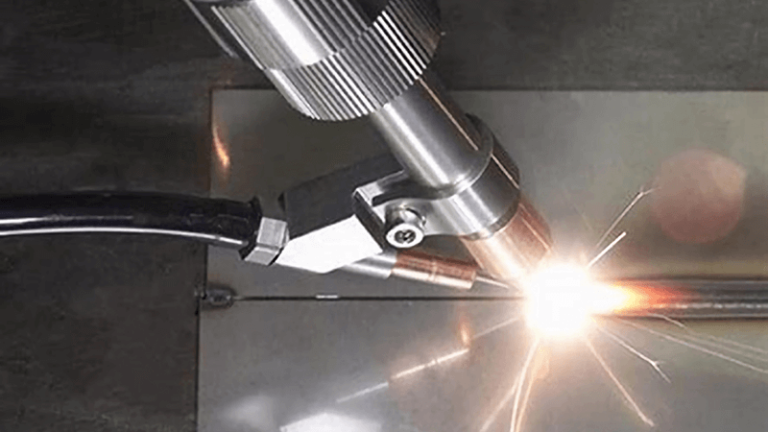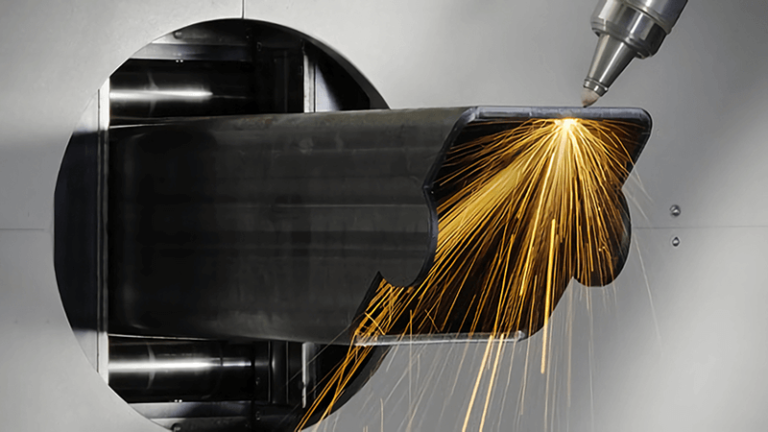When it comes to woodworking and metalworking, the terms "bevel" and "miter" cuts often come up. But what exactly are these cuts, and which one is better for your specific needs? Whether you're cutting wood or metal, understanding the differences between bevel and miter cuts is essential for achieving precision and quality in your projects.
Bevel and miter cuts are essential techniques in both woodworking and metalworking. While a miter cut involves cutting at an angle across the face of the material, a bevel cut is made at an angle through the thickness. Knowing when to use each can significantly impact the quality and appearance of your work.
The question now is, when should you use a bevel versus a miter cut? While both cuts have their applications, the right choice depends on the material and the desired result. Let's explore each cut in more detail and see how they apply in both woodworking and metalworking.

When to use bevel vs miter?
Both bevel and miter cuts are commonly used in woodworking and metalworking, but understanding when to use each is crucial for getting the best results. The key difference lies in the angle and the surface you’re cutting.
Use a miter cut when you want a joint that is cut at an angle across the material's face, often for corners. Bevel cuts, on the other hand, are made at an angle through the thickness of the material, making them ideal for edge treatments and joining parts at an angle.
Choosing between bevel and miter cuts depends largely on the specifics of your project. Here are the key considerations for when to use each:
1. Purpose of the Cut
- Miter Cuts1: Miter cuts are primarily used for joining two pieces of material at an angle, typically for corners. They are commonly used in picture frames, baseboards, and door frames. The cut creates a smooth, clean angle across the material's surface, perfect for forming tight-fitting joints.
- Bevel Cuts2: A bevel cut is made at an angle through the material's thickness. It’s often used when you need to angle the edges of a piece, such as when creating a slanted edge for a table leg or a beveled joint for furniture assembly. Bevel cuts can also be used in metalworking when shaping the edges of metal parts for welding.
2. Material Considerations3
- Woodworking: In woodworking, a miter cut is perfect for clean, angled edges where two pieces of wood need to meet. A bevel cut is more suitable for creating decorative edges or for situations where you need to cut through thicker stock. Woodworkers often use bevel cuts for joinery, like in dovetail joints, where precision in the angle is critical.
- Metalworking: In metalworking, both cuts are crucial. Miter cuts are often used for joining metal parts at precise angles, while bevel cuts are vital for preparing metal edges before welding. The bevel cut ensures that the metal pieces fit together perfectly and strengthens the joint for better performance.
By considering the project needs and material type, you can make a more informed decision about when to use bevel and miter cuts.

Do I need a miter saw for woodworking?
If you're starting out in woodworking or upgrading your workshop, you might wonder whether investing in a miter saw is necessary. Let’s dive into what a miter saw offers and whether it’s essential for your projects.
A miter saw is a powerful tool designed to make precise miter cuts. While it’s not absolutely necessary for every woodworking project, it is essential if you frequently need to make angled cuts for joints or molding. A miter saw can save time and improve accuracy in your cuts.
A miter saw is a specialized tool that allows for precise angle cuts, typically ranging from 0 to 45 degrees. Here’s why you might need one for your woodworking projects:
1. Precision
When making miter cuts, precision is key to ensuring that the edges align perfectly. A miter saw4 allows for consistent, accurate cuts that would be difficult to achieve with a handheld saw or other tools. This makes it an invaluable tool when working with intricate designs or creating tight-fitting joints.
2. Efficiency
A miter saw significantly speeds up the process of making miter cuts. Whether you’re working with trim, crown molding, or other pieces requiring angle cuts, a miter saw cuts through the material quickly and cleanly, saving you time compared to manual cutting methods.
3. Versatility
Many miter saws come with adjustable angles5, enabling you to make bevel cuts as well. This versatility makes it useful for a wide range of woodworking tasks, from picture frames to more complex furniture projects. Additionally, with the right blade, a miter saw can also handle different materials, including some metals, making it a good all-around tool.
While a miter saw is not mandatory for all woodworking tasks, it is highly recommended if you plan on working with angled cuts regularly. It ensures better results and greater efficiency.

What is a bevel cut in woodworking?
Bevel cuts are an essential technique in woodworking, offering clean, angled edges that can enhance the appearance and functionality of your projects. But what exactly is a bevel cut, and how does it differ from other cuts?
A bevel cut is made at an angle through the thickness of a piece of wood. Unlike miter cuts, which are made across the face, bevel cuts angle the edges. This makes bevel cuts ideal for joints, decorative edges, and angled corners.
In woodworking, bevel cuts are often used when you need to angle the edges of a piece of wood. Here’s how bevel cuts6 work and why they’re so useful:
1. Angle and Purpose
A bevel cut is typically made at a specific angle through the thickness of the wood, usually ranging from 15 to 45 degrees. This angle can be adjusted depending on the project requirements. Bevel cuts are essential for creating smooth, angled edges that allow for precise joinery, like dovetail joints, or for decorative trim work.
2. Application in Joinery
Bevel cuts play a significant role in woodworking joinery7. When assembling furniture or frames, bevel cuts allow for tight-fitting joints that help create strong, durable connections. Bevel cuts are also used in creating unique, angled edges for furniture, helping to add aesthetic appeal.
3. Tools for Bevel Cutting
To make bevel cuts, a variety of tools can be used. Table saws with beveling capabilities, hand saws, and power tools like routers can all perform bevel cuts. The key is to adjust the angle of the blade or tool to achieve the desired slope. Some machines, like laser cutters, can also handle bevel cuts with high precision, offering both versatility and quality.
Bevel cuts are versatile and essential in woodworking, especially when creating custom edges or precise joinery for more complex projects.

What is the difference between a bevel joint and a miter joint?
Both bevel and miter joints are used to join two pieces at an angle, but they are quite different in how they are created and used. Understanding the difference can help you decide which joint is best for your next project.
A miter joint is formed by cutting the edges of two pieces of material at a specific angle, typically 45 degrees, and joining them at a corner. A bevel joint, on the other hand, involves cutting at an angle through the thickness of the material, often for strength and aesthetics in furniture-making.
Understanding the differences between bevel and miter joints can be key when deciding which to use in your woodworking or metalworking projects. Here’s a breakdown of each:
1. Miter Joints8
Miter joints are commonly used for framing and are often seen in trim work, baseboards, and corners. The pieces are cut at an angle (usually 45 degrees), and then the edges are joined together. Miter joints are clean, offering a smooth transition between pieces, but they tend to be less durable compared to bevel joints because they don’t have as much surface area for glue or mechanical fasteners.
2. Bevel Joints9
Bevel joints are stronger and more durable. They are created by cutting the pieces at an angle through the thickness, which increases the surface area for adhesion or fastening. This type of joint is more commonly used in furniture-making, where strength is a priority. Bevel joints are also ideal for applications where appearance is important, as they create a sharp, clean edge.
3. Choosing the Right Joint10
When deciding between bevel and miter joints, consider both the strength of the joint and the appearance you want to achieve. If the joint will bear weight or stress, a bevel joint may be a better choice. If the joint is purely decorative and the pieces are not subjected to heavy stress, a miter joint might be the more appropriate option.
Here’s a quick comparison:
| Joint Type | Appearance | Strength | Typical Use |
|---|---|---|---|
| Miter Joint | Clean, sharp edges | Less durable | Picture frames, decorative trim |
| Bevel Joint | Angled, slanted edges | Stronger | Furniture making, load-bearing structures |

Conclusion
In conclusion, both bevel and miter cuts11 have essential roles in woodworking and metalworking. The key is to choose the right cut based on your material, application, and project goals. Whether you’re looking for precision in your joints or a decorative edge, understanding the differences between these cuts will help you make the best choice for your next project.
-
Explore this link to understand the various applications of Miter Cuts in woodworking and metalworking, enhancing your project outcomes. ↩
-
Discover the versatility of Bevel Cuts in different materials and projects, which can elevate your craftsmanship and design. ↩
-
Learn about the specific material considerations for Miter and Bevel Cuts to ensure the best results in your projects. ↩
-
Explore this link to understand the features and benefits of a miter saw, enhancing your woodworking skills. ↩
-
Learn about the advantages of adjustable angles in miter saws for versatile woodworking applications. ↩
-
Explore this link to understand the significance of bevel cuts in woodworking and their applications in joinery and design. ↩
-
Discover how bevel cuts improve woodworking joinery, ensuring strong and aesthetically pleasing connections in furniture making. ↩
-
Explore this link to understand Miter Joints better and see how they can enhance your woodworking projects. ↩
-
Discover the advantages of Bevel Joints and how they can improve the durability of your furniture designs. ↩
-
Learn the key factors in selecting the right joint for your project to ensure both strength and aesthetics. ↩
-
Know more details about laser cutting machines from Kirin Laser. ↩





